#Willard Suitcases Project
Explore tagged Tumblr posts
Text

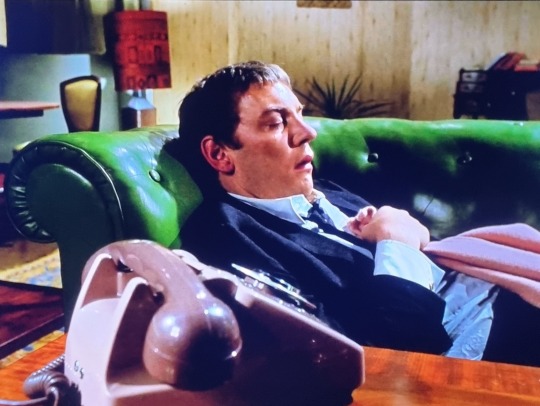
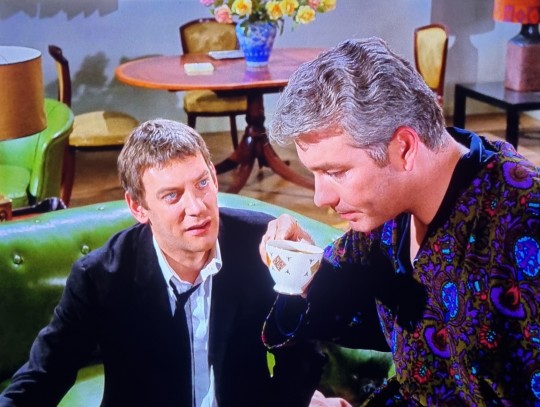
Donald Sutherland guest stars as the easy living Willard, a college friend of McGill - and a rare glimpse into his early life - in Man in a Suitcase: Day of Execution (1.3, ITC, 1967)
#fave spotting#donald sutherland#man in a suitcase#1967#itc#classic tv#day of execution#i don't think it comes up in dialogue but Pixley's bible reveals that the college was specified in the script as that of the University of#Texas; Bradford had attended for a while himself‚ and other references to playing football also fit the real Bradford (who'd been set#for a sporting career until an injury saw him refocus on acting). Sutherland wasn't from Texas of course; a good old Canadian boy#he'd gone to school in Toronto and then moved to London around 1962‚ where he'd been steadily plugging away as brit tv's most successful#(at least in the long term) rentayank. for more on that see other Donald posts in the fave spotting tag; by the time this episode aired Don#was nearing the end of his English residency. he was already netting some notable supporting roles in pretty big movies (The Dirty Dozen#was released in the uk about a week after this episode aired‚ and within a year or so he'd be nailing some of the projects which would#catapult him to true stardom). he's very good here of course‚ as the drunken layabout college friend of McGill who inherited a fortune#from 'daddy' and seems content to spend his days sleeping and nights partying. his involvement in the action of the episode gets a little#murkier in the last act‚ and sets up some really brutal stuff from McGill (he ends up charging Willard $10k to save his life)#also notable is some bloodied face makeup Don wears in that last act‚ having received a beating; MiaS was noted for its increased#violence and bloody fx compared to other itc shows‚ mostly a result of Bradford's own insistence on greater realism and in showing the#result of violence rather than just stage punches and taps on the head. what's unusual is that it was normally Bradford who got bloodied up#perhaps Sutherland's willingness to get all bruised and swollen is indicative of a good working relationship with Bradford?#pixley doesn't comment on it‚ but i think it's quite possible‚ especially as Sutherland was one of the only actors to return for another#episode (one of the few others being Colin Blakely‚ whom Bradford is well known to have been in awe of; it's not beyond the realm of#possibilities that the star had some influence in who was recast for second appearances). but this is conjecture really#just enjoy young Don with his crooked grin and big ears and goofy face. who'd have thunk a future screen icon in 1967?
4 notes
·
View notes
Text
Link to the Symposium
Link to the Symposium
Margaret D. Hi Everyone, here’s the link to the Saturday symposium. Starts at 1:00 PM this Saturday the 19th March. I’ll be speaking fairly early on, just after Craig Williams talks about the history of Willard. Check it out if you can. It should be amazing. https://sjfc.zoom.us/j/94378687995.
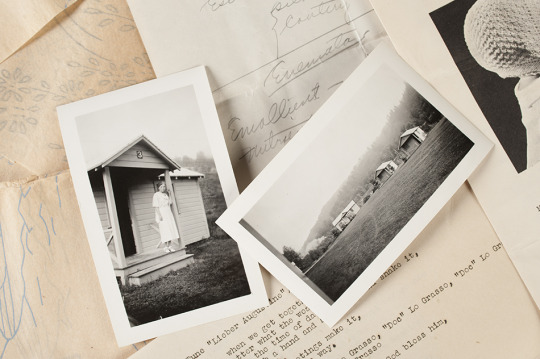
View On WordPress
#Jon Crispin#Willard Asylum#Willard Asylum Suitcases#Willard Psychiatric Center#Willard Suitcase Project#willard suitcases#Willard Suitcases Project
3 notes
·
View notes
Photo


Mlle. Madeline #22040
“ Madeline became increasingly drawn to the world of the occult, which seemed to alienate friends, co-workers, and employers. According to her file, her employers considered her "odd, tactless, and domineering." Unable to find steady work during the Depression, Madeline was referred to the Emergency Work Bureau. They found her unemployable, and referred her for outpatient mental health treatment; this led to her 1931 admission to the psychiatric unit at Bellevue Hospital in Manhattan.”
“ A constant refusal to submit defines Mlle. Madeline's hospital experience. She clearly assumed that her voluntary admission to Bellevue would be temporary, and never expected to be shipped off to Willard in 1939 after passing through Central Islip and Kings Park State Hospitals on Long Island. While at Central Islip, Madeline fiercely stated, "I want out of here immediately. I think it is an outrage to be brought here." In 1965, she was still demanding her release. Records indicate that she told a staff member, "I don't like this hospital. I resent being detained and wasting my time." Madeline was given antipsychotic drugs in the mid-1950s. She developed what later came to be known as tardive dyskinesia (TD), a debilitating movement disorder caused by the drugs. In 1970, her file states that she had "fidgety movements, rigid stances, facial grimaces," which they did not ascribe to the medications. Instead, they prescribed "attitude therapy" to get her to stop making facial grimaces. At the age of 79, Mlle. Madeline #22040 was sent to a private board and care facility near the hospital. She died in October 1986 in Seneca County at the age of 90. Her burial place is unknown.”
(More info at the link above.)
4 notes
·
View notes
Link
An interview with the photographer of the Willard Asylum Suitcase project, Jon Crispin.
1 note
·
View note
Text
mind and materiality
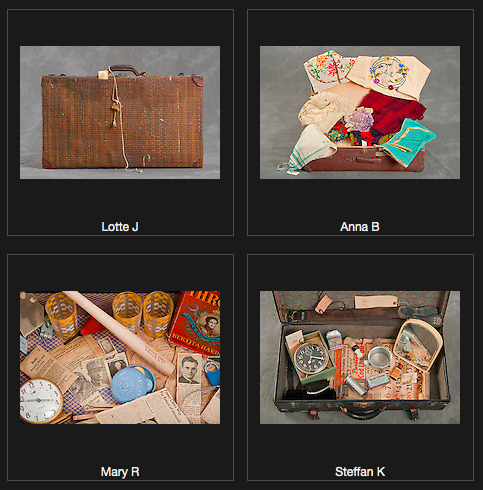
Willard Suitcases
In 1995, the New York State Office of Mental Health closed the Willard Psychiatric Center in Willard, NY. It would eventually become a state-run drug rehabilitation center for prisoners. A Willard employee, Bev Courtwright, was given the task of going through all of the psych center buildings to determine what should be salvaged. She unlocked an attic door behind which was a collection of over 400 suitcases containing the possessions of former patients. The cases had been put into storage when their owners were admitted to Willard sometime between 1910 and 1960. And since the facility was set up to help people with chronic mental illness, most of these folks never left, and many were buried in the cemetery across the road.
Craig Williams acquired the cases for the New York State Museum and they were placed in the permanent collection. I first saw them in 2003 at an exhibit in the Museum where a small number of the suitcases were displayed. It was very moving to read the stories of these people, and to see objects from their lives before they became residents of Willard, and I was determined to photograph more of these cases so others could experience what I felt.
In 2011, the Museum gave me the incredible opportunity to begin this project. These objects open a small window into the lives of some of the people who lived at the facility, and I am determined to share them with as many people as possible.
[Gallery of Suitcases]
Via Dr. Jacqueline Antonovich @jackiantonovich· Feb 23 On Tuesday in my History of Disability class, we're diving into the troubling and complicated history of asylums. We'll be using the Willard Suitcase Project to grapple with the histories of people who were institutionalized. https://willardsuitcases.com
8 notes
·
View notes
Photo
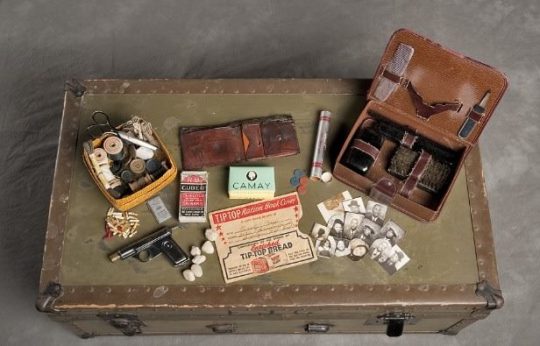
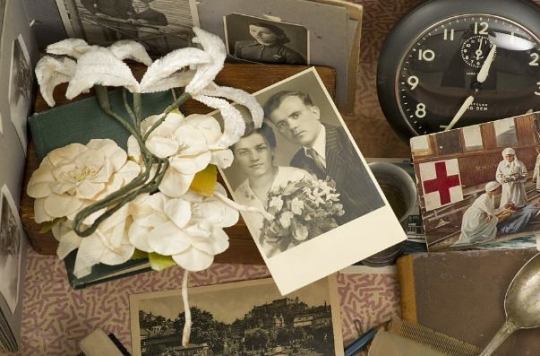
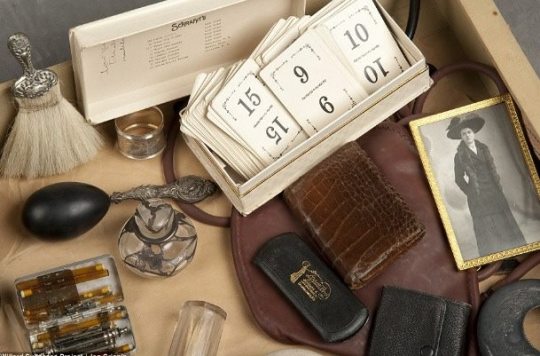
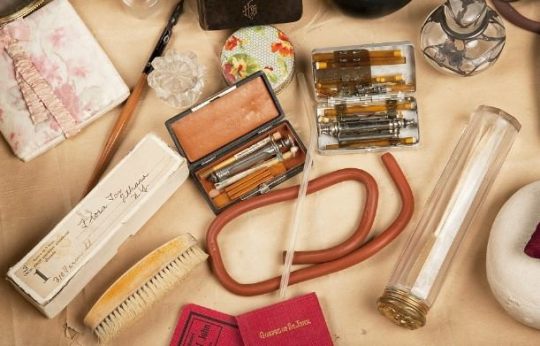
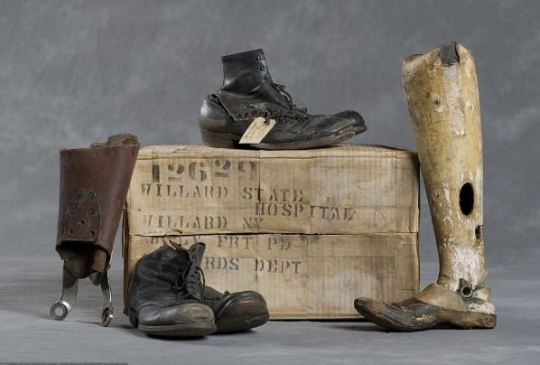
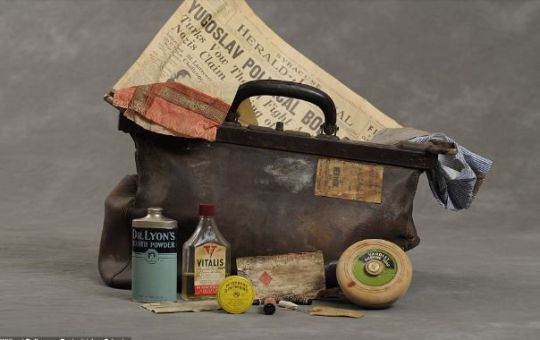
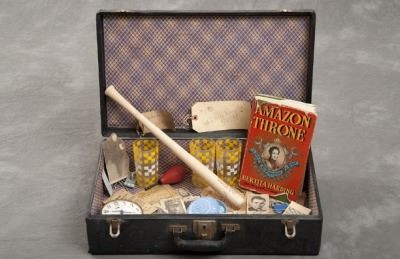
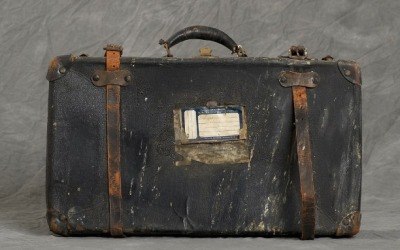
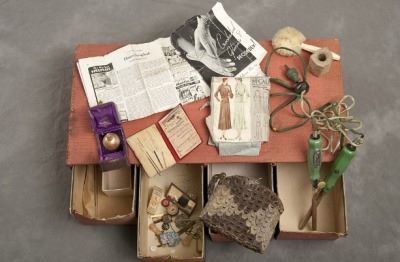
In 1995, Willard Psychiatric Center closed its doors, giving employee Bev Cartwright the task of sorting through more than 400 suitcases left behind by patients admitted between 1910 and 1960.
The scant belongings assembled together became works of art, revealing so much about their owners—or do they?
What might your possessions suggest about you when you're gone? Will they leave an accurate impression?
For more about the project, visit http://www.willardsuitcases.com/.
0 notes
Link
Location: Hayt Corners, NY 14521
Sources for the show:
Madigan, Rita, et al. “Willard Asylum for the Insane: Steward's Report 1900.” Social Welfare History Project, 13 Mar. 2018, socialwelfare.library.vcu.edu/eras/willard-asylum-insane-stewards-report-1900/.
“The Most Haunted Places in Upstate New York, NY.” Haunted Rooms America, www.hauntedrooms.com/top-11-haunted-places-upstate-new-york-ny.
Ugc. “Willard Asylum for the Chronic Insane.” Atlas Obscura, Atlas Obscura, 20 Sept. 2016, www.atlasobscura.com/places/willard-asylum-for-the-chronic-insane.
“Willard Asylum Suitcases.” Willard Asylum Suitcases, www.willardsuitcases.com/.
“Willard Drug Treatment Campus.” Department of Corrections and Community Supervision, doccs.ny.gov/location/willard-drug-treatment-campus.
“Willard State Hospital.” Willard State Hospital - Asylum Projects, www.asylumprojects.org/index.php/Willard_State_Hospital.
www.facebook.com/ExploringUpstate. “An Inside Tour of 'Willard Asylum for the Chronic Insane' - Ovid, NY.” Exploring Upstate, 1 Sept. 2019, exploringupstate.com/willard-asylum-ovid-ny/.
Music:
Cattails Kevin MacLeod (incompetech.com)
Ghost Dance Kevin MacLeod (incompetech.com)
Licensed under Creative Commons: By Attribution 3.0 License
http://creativecommons.org/licenses/by/3.0/
0 notes
Link
In 1995, the New York State Office of Mental Health closed the Willard Psychiatric Center in Willard, NY. It would eventually become a state-run drug rehabilitation center for prisoners. A Willard employee, Bev Courtwright, was given the task of going through all of the psych center buildings to determine what should be salvaged. She unlocked an attic door behind which was a collection of over 400 suitcases containing the possessions of former patients. The cases had been put into storage when their owners were admitted to Willard sometime between 1910 and 1960. And since the facility was set up to help people with chronic mental illness, most of these folks never left, and many were buried in the cemetery across the road.
Craig Williams acquired the cases for the New York State Museum and they were placed in the permanent collection. I first saw them in 2003 at an exhibit in the Museum where a small number of the suitcases were displayed. It was very moving to read the stories of these people, and to see objects from their lives before they became residents of Willard, and I was determined to photograph more of these cases so others could experience what I felt.
In 2011, the Museum gave me the incredible opportunity to begin this project. These objects open a small window into the lives of some of the people who lived at the facility, and I am determined to share them with as many people as possible. You can see the genesis of my approach to this documentation on my wordpress site, here and here. If you would like to watch the Kickstarter video, click here.
The second Kickstarter is now up. Check it out here.
– Jon Crispin
If you haven’t seen this, you need to see this
0 notes
Photo


I’ve been aware of Darby Penney’s work documenting the lives of patients of Willard Hospital for a number of years now. I first learned of the hospital suitcases project from the exhibit at the State Museum and it eventually launched my interest in the state hospital system, the kirkbride plan, and all the topics that discussed in my 2010 thesis. I’m always grateful to the previous generation of peers and ex-patient movement who showed us the way, (we, as in peers who entered the system in the 1990′s and 2000s after the era of deinstitutionalization). We had no direct experience of the state hospitals that were whole cities unto themselves, it was incredible to share a room with, and listen to Darby Penney. Our hospitals were smaller places, --and somewhat meaner --they lacked both the archaic horrors of “treatment” the old state hospitals are reviled for, but also the high-minded ideas of “moral treatment” and the stunning landscapes and architecture of the era of hospitals preceding it. All lacked the funding to implement the most progressive modes of care in those eras. It was a great talk, with lively discussion afterwards. Some photos for people who missed it.
#Darby Penney#peer movement#peer advocacy#suitcases project#Willard Asylum#kirkbride#The Lives They Left Behind#Mental Health Empowerment Project#Troy NY
0 notes
Text
Critical evaluation
During the first week of this module, I was in a group to design an art school of the future based on sustainability. This challenged me as we had a lot of difficulties finding our roles within the group and not everyone was present on some of the days. Despite this, I feel that it was a good opportunity to make connections across the college and explore ideas in ways I hadn't before thanks to the different perspectives that people from other courses brought. I had the chance to look into and experiment with the idea of sustainability within an institution which I enjoyed as this is a passion of mine. I think that as a result of this my research skills have developed in a direction I hadn’t imagined, as the style was much more scientific than what I’ve done before. I was also challenged during the presentation at the end of the week as public speaking is not something I am particularly confident in and I feel that my nervousness got in the way of really presenting the work. This is something I hope to improve at over time. Overall, I’m happy with the research and work that I produced, in spite of the slightly more challenging group organisation.
I really enjoyed going to woodwork and learning to make the bags as I was introduced to a wide range of equipment and techniques that I know I can use in the future for costume and prop making. I feel confident now going to that department and asking Martyn if I need any help or advice about a project. I liked that we had a lot of creative freedom to decorate our bags and that we could produce something more conceptual to communicate the story of our characters. I’m pleased with the experimental techniques that I used to decorate my bag and feel a sense of achievement knowing that I can assemble things such as buckles by myself.
I wasn’t expecting to enjoy learning about wirework as much as I did, and I now feel relatively confident going down there to ask for help with work; something I know will benefit me in the future when making more sculptural costumes and props. I’m really happy with the outcome of the decoration on the wings. I initially intended to cover entirely with paper feathers, but I quickly realised that this wasn’t achievable with the time that I had. After adding the craft feathers I realised that this produced a much nicer look than if I had gone with my original idea, but it still retains the ideas I was trying to communicate.
The research into the patients of Willard Asylum was very interesting and seeing the objects the left behind makes me appreciate that these were just people. After choosing my suitcase I did extensive research on Rodrigo. L, discovering details about his amazing life. After this, I found it difficult to separate what parts I wanted to include and which I would be more creative with. After Natalie’s workshop on building a character, I decided I wanted to use a character I had created in one of the 10-minute exercises we did that involved being given one of the suitcases and having to create a character based on the objects inside. I loved creating my character, Flore, as I feel that she is a person I can relate to, despite her life being drastically different to mine. By drawing upon my personal experience with mental health to create the reasons Flore was in Willard, I think that it has given a more authentic and realistic feel to a character whose story is very much like a dramatic telenovela. It was also a pleasure to get to explore Mexican culture and be able to incorporate aspects of it into my work, hoping that I can do it justice.
Working on exhibiting our work was something that I could get enthusiastic about, compared to the first week presentation, as it was with a group of people I knew were eager and cared for the work, as well as creating an interesting experience for the viewers. It was exciting to begin to think of creative ways of presenting our work and how we might add dramatic flare in order to get people to engage with it. I’m very happy with how this exhibition turned out as we were successful at building the atmosphere of the asylum and it seemed to really capture people's imagination. I feel that we did a good job at sharing tasks equally and managed to come to agreements fairly easily on what should be done of the exhibition. I definitely learned a lot about the health an safety risks associated with the room and how to work safely and creatively when dressing a space. After going around the college to see other courses work, it seemed to be a consensus among the class that the others seemed to lack presentation when showing their work and it often came across that they hadn’t put much effort into letting other people know what they were doing. This is a shame as I would have liked to have seen some exhibitions that I didn’t even know where there as they weren’t promoted properly. I feel very happy with our class for working together to create something that we can take pride in.
I know that the skills that I have learnt during this module will benefit me in the industry and in my college work. These skills include working well in a group, communication skills, working safely in an environment with machinery, dressing a room for exhibitions, research and presentation skills, and I also learnt to take pride in my work and how I show it.
0 notes
Text
Abandoned Suitcases Reveal Private Lives of Insane Asylum Patients

If you were committed to a psychiatric institution, unsure if you’d ever return to the life you knew before, what would you take with you? That sobering question hovers like an apparition over each of the Willard Asylum suitcases. From the 1910s through the 1960s, many patients at the Willard Asylum for the Chronic Insane left suitcases behind when they passed away, with nobody to claim them. Upon the center’s closure in 1995, employees found hundreds of these time capsules stored in a locked attic. Working with the New York State Museum, former Willard staffers were able to preserve the hidden cache of luggage as part of the museum’s permanent collection.
“There were many patients in these asylums who were probably not unlike friends you and I have now.”
Photographer Jon Crispin has long been drawn to the ghostly remains of abandoned psychiatric institutions. After learning of the Willard suitcases, Crispin sought the museum’s permission to document each case and its contents. In 2011, Crispin completed a Kickstarter campaign to fund the first phase of the project, which he recently finished. (Crispin’s current Kickstarter campaign would help him to finish the project entirely.) Next spring, a selection of his photos will accompany the inaugural exhibit at the San Francisco Exploratorium’s new location.
Crispin’s photographs restore a bit of dignity to the individuals who spent their lives within Willard’s walls. Curiously, the identities of these patients are still concealed by the state of New York, denied even to living relatives. Each suitcase offers a glimpse into the life of a unique individual, living in an era when those with mental disorders and disabilities were not only stigmatized but also isolated from society. (All photos by Jon Crispin.)

Collectors Weekly: How did you come across this collection?
Jon Crispin: I’ve worked as a freelance photographer my whole life. In addition to doing work for clients, I’ve always kept my eye out for projects that interest me. In the ’80s, I came across some abandoned insane asylums in New York State, and thought, wow, I’d really like to get in these buildings and photograph them.
So I applied for a grant from the New York State Council on the Arts, got it, and spent a couple of years photographing the interiors and exteriors of these buildings. When the psychiatric programs moved out and shut things down, they basically just closed the doors and walked away. They left all kinds of amazing objects inside these buildings, including patient records in leather-bound volumes.

In the mid-’90s, I heard that at Willard—one of the asylums in which I spent a lot of time photographing—the employees had saved all the patient suitcases that belonged to people who came to Willard and died there. Starting around 1910, they never threw them out.
“I don’t really care if they were psychotic; I care that this woman did beautiful needlework.”
Craig Williams at the New York State Museum fights an ongoing battle to bring objects like these into the collection, and that’s what happened. Willard was being closed as a psych center and converted to a treatment facility for criminals with drug problems. So the New York State Museum received this collection of suitcases, and displayed a few of the cases in 2004. I asked Craig if I could photograph these things, and he said, “Go right ahead.”

Collectors Weekly: Why do you think the suitcases survived so well?
Crispin: Willard is this tiny town where multiple generations of people worked in the asylum, like a father would work there and then his daughter would be a nurse there, and so on. I have a theory that the relationship between the patients and the staff was so close, that the staff couldn’t just throw these possessions away when they died. There’s a cemetery on the grounds, and most of these patients were buried right there. And they kept storing their suitcases and moving them around as certain buildings were closed. Then, of course, with de-institutionalization huge numbers of patients were basically turned out onto the street.
Collectors Weekly: Why were the suitcases left untouched for so long?
Crispin: Willard was a facility for people with chronic mental illness. Originally, doctors thought that all you had to do was remove people from the stresses and strains of society, give them a couple of years to get their life together, and they’d get better. Eventually people realized they needed facilities where patients could come and never leave. There’s some question as to whether or not the patients themselves packed their suitcases, or if their families did it for them. But the suitcases sent along with them generally contained whatever the incoming patient wanted or thought they might need.

Collectors Weekly: What makes you think the patients had access to their suitcases after they arrived?
Crispin: There were many levels of mental illness in these places. Some people were in really bad shape, and sometimes had to be restrained, completely unable to function in any kind of society or environment. Those people probably did not have access to their suitcases.
“It wasn’t some hellhole where people were chained to the walls.”
But a large number of people at the asylum were ambulatory. They were out and about; they worked at the farm; they did artwork. Some of these places even had their own dance bands. The Utica State Hospital had a literary journal. There were many patients in these asylums who were probably not unlike friends you and I have now. The reasons why people were put in these facilities ranged from everything to serious psychoses and delusions to people who couldn’t get over the death of a parent or a spouse. Other people were institutionalized just because they were gay.


Initially, my idea was to pair the suitcase photographs with some indication of why these people were in Willard. As the project evolved, I found I wasn’t that interested in such a literal connection. The suitcases themselves tell me everything I want to know about these people. I don’t really care if they were psychotic; I care that this woman did beautiful needlework. I’m much more interested in the objects themselves and what people thought was important to have with them when they were sent away.
Some people at Willard definitely had access to the things they brought with them. For example, one case was filled with what look to be leather-working tools, and it’s pretty clear that this person used those tools because these facilities had time allotted for arts and crafts. The suitcases also contain lots of letters received by people while living at Willard, and there were lots of letters that were written at the asylum but never mailed. There were also examples of things written by people who were obsessive-compulsive, like the guy who wrote down the name of every railroad station in the United States on page after page of his notebooks.

Collectors Weekly: Can each suitcase be traced to an individual patient?
Crispin: I have access to all the names, and New York State has the medical records for anyone admitted to these hospitals since the 1850s, so their histories are well-documented. I would like to use their full names in the photographs, but because of the Health Insurance Portability and Accountability Act (HIPAA), the laws about medical records and privacy, there’s some question as to whether or not I could be vulnerable to a lawsuit by the state.


Here’s a weird story: When I do the shooting, my digital photographs are labeled with what’s called IPTC information. It’s all the camera metadata stored with each photo, and you can add whatever you want. I typically add my copyright information, and also the names of the Willard patients for my own records. But when I upload photos to my blog, I strip that out.
For one person’s suitcase, I forgot to delete their name. Two days later, I got a call from someone who’s desperate, saying, “Do you have the objects of —?” and she gave the name of the person. And she said, “That is my grandmother. We didn’t know anything about her.” She had Googled her grandmother’s name and came across the Willard suitcases on my site. But even in this situation, the woman had to prove to the state that she was not only the granddaughter of this person, but that she was legally the recipient of her estate. So, in other words, if the grandmother had willed her estate to the other side of the family, this woman would not have been able to get access to her things.


I’m still trying to figure out how I can name these people, because I think it dehumanizes them even more not to. People who’ve been in mental institutions themselves have said, “Your project is very moving to me, but I’m very disappointed that you have to obscure names.” I think the stigma of mental illness has evolved from something shameful to something that’s much more medical and much more accepted. It just happens to people. But I’ve been very careful at this point in obscuring names, because there are many documents within the cases with names on them. I’m not showing their medical records; I’m only talking about the fact that they lived at Willard.
Collectors Weekly: Why weren’t these suitcases returned to family members when these people died?
Crispin: They tried, and again, the issue had to do with HIPAA laws. Contacting people with the information that their suitcases were in possession of the state was complicated by HIPAA. But the other problem was that a good number of these people were basically abandoned by their families, and their relatives showed very little interest in receiving their things after they died.

Collectors Weekly: What was the process like to shoot the suitcases?
Crispin: Well, when I originally shot the asylums, I would walk into a building or into a room, and I wouldn’t move anything. I prefer being honest in documenting what was already there. But in this situation, you might have a suitcase filled with 30 individually wrapped items that I had to unwrap and position.
The museum had three interns go through every case to catalog the contents and preserve them, essentially taking things that were floating around loose inside the cases, wrapping them, documenting them, and then put them back in the cases. So when I open a case, I’m also recording the way the museum did this, unwrapping the items, photographing them, and then putting it all back.


It’s a little hard for me because I don’t like to spend a lot of time laying things out, so I basically try to put the objects in a situation that looks as natural as possible. Especially hard were the suitcases filled with clothing. I’m not one of those studio guys who loves to set stuff up and get the lights perfect; I would’ve preferred opening up the case and photographing the inside exactly as I saw it, but that wasn’t possible.

There are still empty cases that I haven’t photographed, but even those are interesting to me just as suitcases, and there’s a whole group of people that love old suitcases. I think one of the reasons the project has been so successful is because it appeals to people in very different areas. It appeals to people who had family members in psych centers or who worked in psych centers or who are interested in old Greek-revival architecture. I was posting a lot on my blog, and I got messages from people interested in fabric or needlepoint and ephemera like toothpaste tubes and stuff from the ’20s and ’30s that doesn’t exist anymore.
Collectors Weekly: Was there any single suitcase that stuck with you?
Crispin: One of the last cases I shot was from a guy named Frank who was in the military. His story was particularly sad. He was a black man, and I later found out he was gay. He was eating in a diner and felt that the waiter or waitress disrespected him, and he just went nuts. He completely melted down, smashed some plates, and got arrested. His objects were particularly touching because he had a lot of photo booth pictures of himself and his friends. Frank looks very dapper, and there are all these beautiful women from the ’30s and ’40s in his little photo booth pictures. That really affected me.



Dmytre’s suitcase is another that I really like, it’s the last case I did. Dmytre was very moving. He was Ukrainian and clearly brilliant. He had notebooks filled with drawings of sine waves and mathematical things like that. There’s a wedding picture of Dmytre and his wife, and she’s holding a bouquet of fake flowers, which were also in the case.
Dmytre was interesting because he got arrested by the Secret Service because he went to Washington, D.C. and said that he was actually married to President Truman’s daughter, Margaret Truman. And what’s great is there’s a little Washington monument thermometer in the case, so clearly he bought a little tchotchke on his trip to D.C. and then later got arrested for saying that he was Margaret Truman’s husband.



Obviously, some of the cases were a lot more mundane than others. There was one that had syringes in it that were so beautiful and old, and small drug packets with pills still in them. There were combs, books, bibles, clocks, and an incredible Westclox Big Ben alarm clock in its original box that’s unbelievably pristine.
There was lots of expensive stuff, like perfume bottles from Paris that were worth tons of money. People wonder, how is it that a woman who’s committed to Willard has a bottle of perfume, which even at the time was super expensive? Mental illness doesn’t target any one particular group of people; it takes all kinds.
Collectors Weekly: Did stories often emerge from the objects you found inside each case?
Crispin: You could tell a lot about a person by what was in their case. One of the most touching letters I read was written to a woman who had been in another asylum and then released and finally sent to Willard. There was a letter from her sister, saying, “You could come back to Erie, but I don’t want you living in the YMCA because they’re still really upset with you for trying to stab that girl.” That one letter tells you a ton about what this woman’s life was like.


But every case was different; I was constantly blown away. It was very important to me not to carelessly rifle through these things and forget that they were somebody’s personal belongings. And I really have a lot of respect for these people as well as the nurses and doctors who worked at the facility. I came away from all of this and the asylum work I did in the ’80s thinking that the state was actually trying to help people. It wasn’t some hellhole where people were chained to the walls. They tried to help, and I think it’s important to keep that in mind.
While I was reverent, I tried not to be overly serious. I actually laughed a lot. If you’re ever around people in psych centers or even psychiatrists and nurses, a lot of their experiences are funny. Some of the items were amusing, but some made your heart ache, and others made you go, holy shit, what is this about? I was constantly affected by the items, and that’s my goal with photographs.


0 notes
Photo
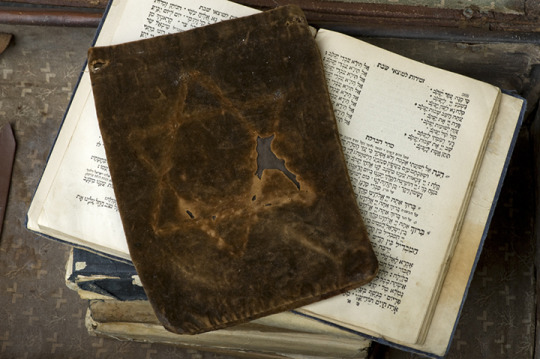
Yiddish Book Center Virtual Talk Hi Everyone. I am not posting here on Wordpress so much as I mostly am doing…
#@willardsuitcases#Ilan Stavans#Jon Crispin#Mental Health#Mental Health Awareness#Willard Asylum#Willard Asylum Suitcases#Willard Psychiatric Center#Willard Suitcase Project#willard suitcases#Willard Suitcases Project#Yiddish Book Center
1 note
·
View note
Photo



Mrs. Ethel #20756
“After she left [her husband] Seymour, Ethel supported herself as a seamstress. Her suitcase contained examples of her high-quality needlework: a finely hand-sewn quilt, a beautifully embroidered baby gown and intricately worked baby booties. In 1930, she was admitted to Willard. Her file states that "she refused to leave the place where she was living and went to bed saying she was ill ... As she refused to leave the house, the landlady made a petition for her commitment."
1 note
·
View note
Link
Fascinating photography project. Well worth the visit and viewing time if you're into sociology, storytelling, and/or history.
From the about page by Jon Crispin:
“In 1995, the New York State Office of Mental Health closed the Willard Psychiatric Center in Willard, NY. It would eventually become a state-run drug rehabilitation center for prisoners. A Willard employee, Bev Courtwright, was given the task of going through all of the psych center buildings to determine what should be salvaged. She unlocked an attic door behind which was a collection of over 400 suitcases containing the possessions of former patients. The cases had been put into storage when their owners were admitted to Willard sometime between 1910 and 1960. And since the facility was set up to help people with chronic mental illness, most of these folks never left, and many were buried in the cemetery across the road.
Craig Williams acquired the cases for the New York State Museum and they were placed in the permanent collection. I first saw them in 2003 at an exhibit in the Museum where a small number of the suitcases were displayed. It was very moving to read the stories of these people, and to see objects from their lives before they became residents of Willard, and I was determined to photograph more of these cases so others could experience what I felt.
In 2011, the Museum gave me the incredible opportunity to begin this project. These objects open a small window into the lives of some of the people who lived at the facility, and I am determined to share them with as many people as possible.”
1 note
·
View note
Photo


The Willard Suitcases Project
0 notes
Text
On the Radio
Hi Friends. Sorry for the late notice but I will be on WXXI Rochester today (6 April) at 1:00 PM. (wxxinews.org) I will be talking about the suitcases and will be joined by the amazing Peg Ellsworth who worked at Willard for almost 40 years. The program will also be archived so you can listen later. Thanks!
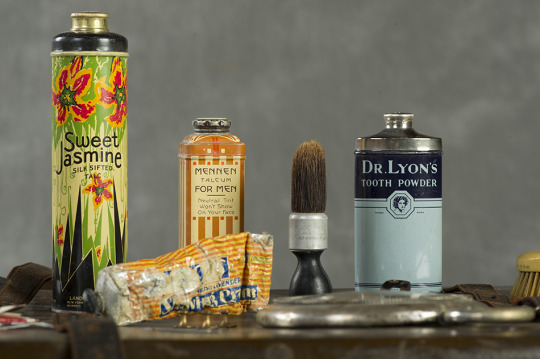
View On WordPress
#Jon Crispin#Willard Asylum#Willard Asylum Suitcases#Willard Psychiatric Center#Willard Suitcase Project#willard suitcases#Willard Suitcases Project#wxxinews
1 note
·
View note